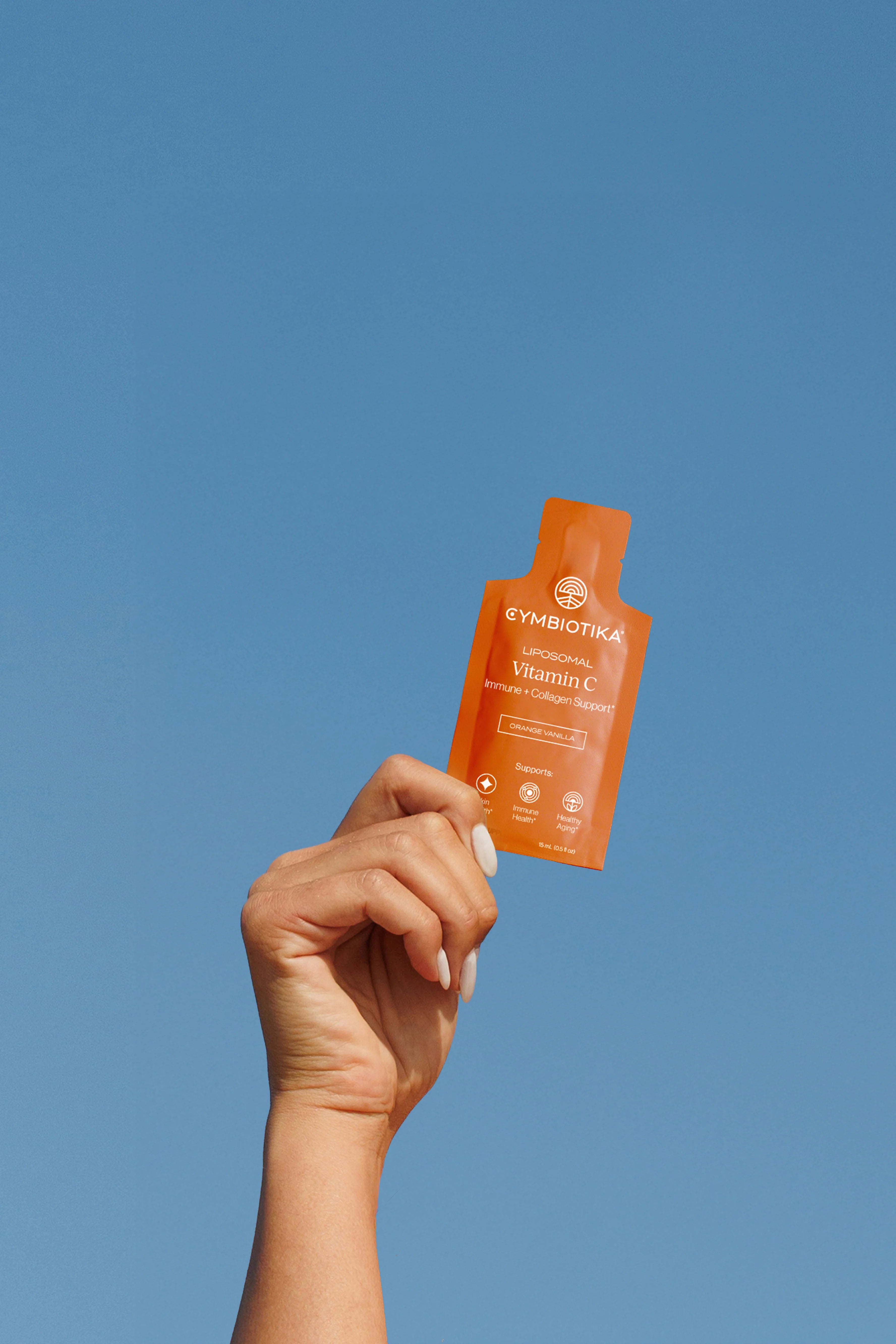Table of Contents
- Introduction
- The Science of Blood Sugar and Exercise
- Practical Tips for Incorporating Cardio into Your Routine
- The Role of Nutrition and Supplements
- Conclusion
- FAQ
When we think about exercise, many of us picture sweat-drenched workouts, heart-pounding intervals, and the exhilarating rush of endorphins. But there’s much more to exercise than just the immediate benefits to our mood and physical fitness. For individuals concerned about their blood sugar levels, particularly those managing diabetes or prediabetes, understanding the relationship between cardiovascular exercise and blood glucose is crucial.
Did you know that regular aerobic exercise can significantly improve insulin sensitivity and contribute to better blood sugar control? As we delve into the intricacies of how cardio affects blood sugar levels, we’ll explore the science behind exercise, practical applications for daily life, and how we at Cymbiotika can support your wellness journey through quality supplements.
Introduction
The rising prevalence of diabetes, particularly Type 2 diabetes, has made understanding blood sugar management more important than ever. In fact, according to the Centers for Disease Control and Prevention (CDC), approximately 34.2 million Americans have diabetes, and around 88 million adults are estimated to have prediabetes. With such staggering numbers, it’s clear that maintaining healthy blood sugar levels is a significant public health concern.
Exercise, especially cardiovascular training, is one of the most effective lifestyle changes that can help manage blood sugar levels. But how exactly does cardio lower blood sugar?
In this blog post, we will explore the connection between cardiovascular exercise and blood sugar levels, how different types of exercise affect glucose metabolism, and the role of insulin sensitivity. We’ll also discuss practical tips for incorporating cardio into your routine and how our science-backed supplements at Cymbiotika can further enhance your wellness journey. By the end of this post, you’ll have a clearer understanding of how cardio can play a pivotal role in blood sugar management.
The Science of Blood Sugar and Exercise
Blood sugar, or glucose, is the primary energy source for our body's cells. Insulin is the hormone responsible for regulating glucose levels by facilitating its uptake into cells. In individuals with diabetes, this process is impaired, leading to elevated blood sugar levels. Regular exercise, particularly aerobic exercise, can positively influence this process in several ways.
How Cardio Affects Blood Sugar Levels
-
Increased Glucose Uptake: During cardiovascular exercise, our muscles require more energy. To meet this demand, they increase glucose uptake from the bloodstream, which can lead to lower blood sugar levels during and after exercise.
-
Enhanced Insulin Sensitivity: Regular aerobic exercise improves insulin sensitivity, meaning that our cells become more responsive to insulin. This allows for more efficient glucose uptake even when insulin levels are lower, which is particularly beneficial for individuals with insulin resistance.
-
Hormonal Regulation: Exercise stimulates the release of various hormones, including adrenaline and glucagon, that can impact blood sugar. While adrenaline can temporarily raise blood sugar levels, the overall effect of regular exercise is to lower average blood sugar levels over time.
-
Post-Exercise Effects: The benefits of cardio don’t stop when the workout ends. Studies have shown that physical activity can lower blood sugar levels for up to 24 hours post-exercise due to increased insulin sensitivity and enhanced glucose metabolism.
Types of Cardiovascular Exercise
Not all cardio is created equal. Different types of cardiovascular activities can have varying effects on blood sugar levels:
-
Moderate Intensity Aerobic Exercise: Activities like brisk walking, swimming, and cycling are excellent for lowering blood sugar. They promote steady heart rates and sustained glucose uptake.
-
High-Intensity Interval Training (HIIT): This involves alternating between short bursts of intense activity and rest. While HIIT can lead to temporary spikes in blood sugar due to stress hormones, it can also significantly improve insulin sensitivity and lower blood sugar over time.
-
Postprandial Exercise: Engaging in light physical activity (like walking) after meals can help mitigate post-meal blood sugar spikes, making it a practical approach for those looking to manage their glucose levels.
Practical Tips for Incorporating Cardio into Your Routine
Now that we understand the benefits of cardiovascular exercise for blood sugar management, let’s discuss how to effectively incorporate it into our daily lives.
1. Start Slow and Build Up
If you’re new to exercise, it’s important to start slow. Aim for at least 150 minutes of moderate-intensity aerobic activity per week, as recommended by the American Diabetes Association. This can be broken down into manageable 30-minute sessions, five times a week.
2. Choose Activities You Enjoy
Engagement is key to consistency. Whether it’s dancing, cycling, or swimming, find activities that you enjoy. This not only makes exercising more fun but also increases the likelihood that you’ll stick with it long-term.
3. Monitor Your Blood Sugar
For those with diabetes, it’s crucial to monitor blood sugar levels before, during, and after exercise. This helps you understand how your body responds to different activities and allows you to make necessary adjustments to your routine.
4. Pair Cardio with Strength Training
Combining cardio with resistance training can optimize blood sugar control. Strength training helps build muscle mass, which can further improve insulin sensitivity and glucose uptake.
5. Consider Timing
Some people find that exercising after meals is particularly effective for managing post-meal glucose spikes. Experiment with timing to see what works best for you.
The Role of Nutrition and Supplements
While exercise plays a crucial role in blood sugar management, nutrition is equally important. A balanced diet rich in whole foods, fiber, lean proteins, and healthy fats can support overall health and glucose control.
At Cymbiotika, we are dedicated to empowering our community with high-quality supplements that align with our mission of transparency and trust. Our formulations utilize advanced liposomal delivery for optimal bioavailability, ensuring that you receive the maximum benefits from every ingredient.
Key Supplements to Consider
-
Omega-3 Fatty Acids: These essential fats can help reduce inflammation and improve insulin sensitivity, making them a great addition to your wellness routine.
-
Vitamin D: Low levels of vitamin D have been associated with impaired glucose metabolism. Supplementing with vitamin D can support overall wellness and metabolic health.
-
Magnesium: This mineral plays a role in glucose metabolism and insulin sensitivity. Ensuring adequate magnesium intake can contribute to better blood sugar control.
-
Probiotics: Gut health is increasingly recognized for its role in metabolic health. Probiotics can support a healthy gut microbiome, which may positively impact blood sugar levels.
If you’re looking to determine which supplements might be best for your unique needs, we invite you to take our AI quiz at Cymbiotika's AI Quiz. This interactive tool will help guide you toward the right products for your wellness goals.
Conclusion
Understanding the relationship between cardiovascular exercise and blood sugar levels is essential for anyone concerned about their metabolic health. Regular aerobic activity not only helps lower blood sugar during workouts but also enhances insulin sensitivity, providing lasting benefits for blood glucose control.
Incorporating cardio into our daily lives, alongside proper nutrition and high-quality supplements, can empower us to take control of our health. At Cymbiotika, we are committed to supporting your wellness journey with transparency, quality, and science-backed formulations that align with our mission of helping you achieve optimal health.
Before starting any new exercise program or supplement regimen, it’s crucial to consult with a healthcare professional, especially if you have existing health conditions.
Together, let’s embrace a lifestyle that prioritizes movement, nutrition, and overall well-being. We’d love to hear about your personal experiences with exercise and blood sugar management—feel free to share your thoughts and questions in the comments below!
FAQ
Does cardio lower blood sugar immediately?
Yes, cardio can lower blood sugar levels during exercise as muscles utilize glucose for energy. However, the effects can vary based on the individual and the intensity of the workout.
How long does the effect of cardio last on blood sugar?
The effects of aerobic exercise on blood sugar can last for up to 24 hours post-exercise, primarily due to improved insulin sensitivity.
Is high-intensity exercise better for lowering blood sugar?
High-intensity interval training (HIIT) can be beneficial for improving insulin sensitivity and lowering blood sugar over time, but it may cause temporary spikes in glucose levels during the workout.
How often should I exercise to manage blood sugar levels?
Aim for at least 150 minutes of moderate-intensity aerobic activity per week, spread across several days. This can include activities like brisk walking, cycling, or swimming.
Can nutrition supplements help with blood sugar management?
Yes, certain supplements, such as omega-3 fatty acids, vitamin D, magnesium, and probiotics, may support overall metabolic health and blood sugar control. Always consult with a healthcare professional before starting any new supplements.
For personalized supplement recommendations, we encourage you to explore our offerings and take our AI quiz at Cymbiotika's AI Quiz. Your wellness journey is important to us, and we’re here to support you every step of the way!
*These statements have not been evaluated by the Food and Drug Administration. This product is not intended to diagnose, treat, cure, or prevent any disease.





















